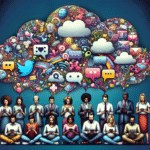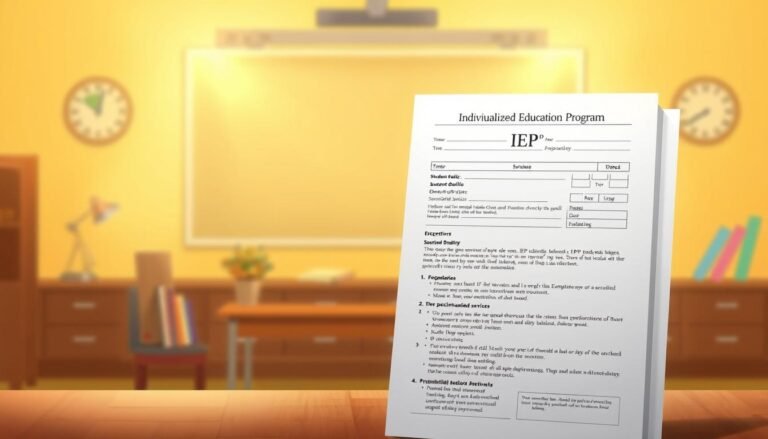From Struggle to Symphony: The Ultimate Role of Music in Overcoming Learning Challenges
Introduction: The Healing Power of Music
Imagine a child sitting silently in class, struggling to grasp the concepts being taught. This wasn’t an uncommon scene in the life of Jake, a bright boy with a vivid imagination trapped in a world ruled by learning challenges. But when he picked up a guitar for the first time, everything changed. His struggles transformed into melodies, unlocking a new way to learn and communicate ideas.
From Struggle to Symphony: The Role of Music in Overcoming Learning Challenges is not just a profound statement; it symbolizes the transformative journey many individuals undergo. Music serves as a universal language that reinforces learning, enhances emotional expression, and builds confidence. In this article, we’ll explore the depth and breadth of how music can revolutionize the lives of those facing learning difficulties, using compelling case studies and actionable insights to guide you on this journey.
The Science Behind Music and Learning
Understanding Music’s Impact on the Brain
Music is not merely a form of entertainment; it is a powerful tool that engages multiple areas of the brain. Research has shown that music stimulates cognitive function and emotional regulation, making it a valuable assistant in learning.
Key Brain Areas Involved
| Brain Area | Function |
|---|---|
| Auditory Cortex | Processes sounds, enabling comprehension |
| Limbic System | Manages emotions and memory formation |
| Prefrontal Cortex | Facilitates decision-making and social behavior |
Studies, such as those conducted by neuroscientists at the University of California, indicate that music can improve memory retention by 20%. This effect can be especially beneficial for individuals with dyslexia, ADHD, or other learning disabilities.
Music Therapy: A Proven Method
Music therapy involves using music-based interventions to address various physical and emotional needs. According to the American Music Therapy Association, this evidence-based approach has proven effective for learners struggling with emotional and developmental challenges. The structured environment of music therapy can foster self-expression and creativity.
Case Studies: Music Changing Lives
Case Study 1: The Power of Rhythm in ADHD
Lucas, a 12-year-old boy diagnosed with ADHD, faced constant struggles with focus. His disruptive behavior often alienated him from his peers. After enrolling in a rhythm-based music therapy program, Lucas found a new way to express himself. Through drumming, he learned to communicate emotions and regulate his impulses.
Analysis: The rhythmic nature of drumming required Lucas to engage with his attention actively. He found that the repetitive patterns helped him focus better in both the musical and academic arenas. The sessions not only improved his academic performance but also enhanced his social interactions.
Case Study 2: Connecting Through Songwriting
Amelia, a high school student with severe dyslexia, often felt isolated due to her reading difficulties. After being introduced to a songwriting class, she discovered a unique way to share her thoughts and feelings. Over time, she composed songs that resonated with her experiences.
Analysis: Songwriting allowed Amelia to bypass the challenges of written language. She was able to communicate her feelings through melodies and lyrics. This form of expression enhanced her self-esteem and allowed her to connect with others on a deeper level.
Music as a Universal Language
Bridging Communication Gaps
For individuals who struggle with verbal communication—such as those on the autism spectrum—music offers an alternative way to express feelings and thoughts.
The Role of Music in Social Interaction
| Communication Method | Description |
|---|---|
| Nonverbal Communication | Music allows for expression without words |
| Shared Experience | Group music-making fosters connection and teamwork |
| Expressive Arts | Enables emotional expression that may be difficult verbally |
The engaging nature of music creates a platform for collaborative learning, enhancing social skills and emotional expression.
Building Confidence Through Performance
The Stage as a Learning Environment
Performing in front of an audience is often one of the most daunting tasks for individuals struggling with learning challenges. However, participating in musical performances can significantly boost confidence.
Case Study 3: The Transformative Stage Experience
Jordan, a young boy with speech difficulties, participated in a school musical. Despite initial fears, he discovered a newfound confidence while performing on stage. The applause and support from peers were instrumental in reinforcing his self-worth.
Analysis: The experience of performing not only allowed Jordan to showcase his musical talents but also served as a lesson in overcoming fear. He learned that his challenges did not define him, leading to a significant improvement in his speech capabilities in the long run.
Music as a Tool for Memory Retention
The Power of Melody
Melody is often more memorable than plain text. Integrating music into educational settings can enhance memory retention and help students recall information effortlessly.
Practical Applications in Learning Environments
| Subject Area | Music Integration Technique |
|---|---|
| Mathematics | Setting equations to familiar tunes |
| Vocabulary | Learning words through rap and rhythm |
| History | Using song lyrics to memorize dates and events |
By associating melodies with information, learners can retrieve knowledge more easily, showing the potential of music as an educational tool.
Inspiring Change: Lessons Learned
Actionable Insights for Educators and Parents
- Incorporate Music in Everyday Learning: Use songs related to the curriculum to help engage students.
- Offer Musical Opportunities: Create environments where children can express themselves through music, whether in classrooms or therapy.
- Collaborate with Music Therapists: Engage professionals to tailor music programs that cater specifically to the needs of students with learning challenges.
Conclusion: Transforming Struggles into Symphonies
As we conclude our exploration into From Struggle to Symphony: The Role of Music in Overcoming Learning Challenges, it becomes clear that music is more than just a form of entertainment; it is a transformative tool. It inspires individuals to rise above challenges, enables deeper understanding, and fosters emotional connections.
Whether you’re an educator, a parent, or someone passionate about helping others, embracing the role of music in learning can yield harmonious results. As you embark on this journey, remember that every struggle can lead to a beautiful symphony.
FAQs
How does music affect brain development in children?
Music stimulates neural pathways, enhancing cognitive skills, emotional regulation, and social interaction.Can music therapy help with anxiety related to learning challenges?
Yes, music therapy provides a safe space for emotional expression, significantly reducing anxiety levels.Are there specific music genres that are better for learning?
Classical music is often cited for enhancing concentration, while upbeat genres can increase motivation and engagement.What age is best to introduce music for learning?
Starting as early as possible can yield beneficial results, but it’s never too late to introduce music into learning.- How can I incorporate music into my child’s learning routine?
Sing songs related to their study material, incorporate musical instruments, or involve them in musical classes or groups.
By understanding and harnessing the power of music, we can help individuals not just overcome their learning challenges but thrive—transforming their struggles into beautiful symphonies. Let’s encourage this art form to resonate through generations to come!
















